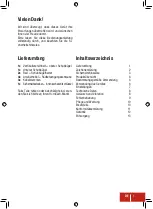
Part 3 - Ins
talla
tion and Field Se
ttings
DC Inverter Chiller
49
Maximum chilled water flow: the maximum chilled water flow is limited by the permitted pressure drop in the
evaporator. If the system flow is more than the maximum unit flow rate, bypass the evaporator as shown in the diagram
to obtain a lower evaporator flow rate.
Figure 3-3.6: Diagram for maximum chilled water flow
Evaporator
Recirculation
Minimum and Maximum water flow rates:
Table 3-3.6: Minimum and Maximum water flow rates
Model
Water flow rate(m
3
/h)
Minimum
Maximum
KEM-30 DRS4
3.8
6.4
KEM-60 DRS4
8.0
13.0
3.3.5
Water circuit connection
Water connections must be made correctly in accordance with the labels on the outdoor unit, with respect to the water
inlet and water outlet. If air, moisture or dust gets in the water circuit, problems may occur. Therefore, always take into
account the following when connecting the water circuit:
Use clean pipes only.
Hold the pipe end downwards when removing burrs
Cover the pipe end when inserting it through a wall to prevent dust and dirt entering.
Use a good thread sealant for sealing the connections. The sealing must be able to withstand the pressures and
temperatures of the system.
When using non-copper metallic piping, be sure to insulate the two kind of materials from each other to prevent
galvanic corrosion.
For copper is a soft material, use appropriate tools for connecting the water circuit. Inappropriate tools will cause
damage to the pipes
3.3.6
Water piping insulation
The complete water circuit including all piping, water piping must be insulated to prevent condensation during cooling
mode operation and reduction of the heating and cooling capacity as well as to prevent of freezing of the outside water
piping during winter. The insulation material should be of least of B1 fire resistance rating and should comply with all
applicable legislation. The thickness of the sealing materials must be at least 13mm with thermal conductivity 0.039W/
mK in order to prevent freezing on the outside water piping. If the outdoor ambient temperature is higher than 30°C
and the humidity is higher than RH 80%, the thickness of the sealing materials should be at least 20mm in order to avoid
condensation on the surface of the seal.
















































